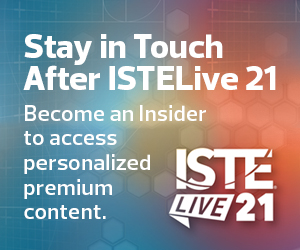For the Lewisville Independent School District’s IT team, spring break of 2020 was no vacation. They had only two weeks to figure out how to securely transition nearly 60,000 students and staff and their devices to remote learning.
In a Tuesday evening session at ISTELive 21 called “We Did It! Secure Connectivity Outside of the District Network,” Chris Langford, Lewisville ISD’s director of network, infrastructure and cybersecurity, shared how his team worked with Cisco to secure connectivity for users outside of its network.
The school district about 20 miles north of Dallas has 91,000 devices for its 50,000 students and 6,500 staff members across 68 schools. Fortunately, it already had a device deployment plan before the pandemic and turned to its playbook to execute it.
Ensuring Offsite Security for Take-Home Student and Staff Devices
The district went remote from March of 2020 through the end of that school year. When they re-opened in the fall, 100 percent of its students were remote for the first two weeks, and for the next nine weeks, 50 percent of its students logged in from home for their classes.
While the district had been issuing one-to-one devices to students in fourth through 12th grades for about nine years, that was not the case for pre-K through third grade students.
So, over spring break and the following week, the district had to configure multiple device types for staff and students. It also had to repurpose thousands of classroom tablets for students in pre-K to third grade and acquire Chromebooks for other students and Windows laptops for staff, many of whom had never had take-home devices before. More than 1,000 registrars, bookkeepers, clerks and other front-office staff transitioned from desktops to laptops to work from home.
DISCOVER: Laptop and 2-in-1 device solutions for your remote learning environment.
The IT team ensured the devices would maintain the same filtering and security offsite as they would on campus by configuring them with the cloud security platform Cisco Umbrella, Cisco Advanced Malware Protection, a VPN app and a content filtering tool.
Blocking Fraudulent Emails, Websites and Unemployment Claims
Like many other K–12 districts, Lewisville ISD saw an increase in malicious activity during remote learning, including fraudulent unemployment claims. However, Langford said his team’s due diligence ahead of time paid off.
In the beginning of the 2020-21 school year, “we saw a major increase in phishing and malicious emails from what we normally see, which we were expecting to happen,” he said. The IT team was able to block some 16.7 million malicious emails between mid-August and mid-September of 2020 using Cisco Cloud Email Security.
16.7 Million
The number of phishing emails that the Lewisville IT Team blocked between mid-August and mid-September of 2020
Source: Chris Langford, Lewisville ISD’s director of network, infrastructure and cybersecurity
The team also successfully blocked access to about 110,000 malicious websites. “Umbrella is one of the best tools we have in our arsenal. My staff absolutely loves it, and we set it up a little over three years ago in an afternoon,” Langford said.
VoIP Investments Enable Secure Remote Communication
Additionally, Lewisville ISD invested in three mobile device management systems for its various devices. This allowed IT staff to securely push software updates to the remote devices.
The district also integrated a Cisco Webex Voice over Internet Protocol communication service into its communication system to allow staff to make secure phone calls using their existing office phone numbers.
MORE FROM ISTELIVE 21: Advocates urge schools to consider permanent remote and hybrid options.
Finally, due to the pandemic, teachers used their laptops or tablets to conduct meetings with parents. However, this year the district plans to install a virtual meeting room on each campus for staff to meet with parents or attend district meetings. By logging in from a separate room equipped with a camera that follows the user around the room, a microphone array and a soundbar, Langford said, users could experience better-quality streaming video conversations than they would on their laptops or tablets alone.
Join EdTech as we provide written and video coverage of ISTELive 21. Bookmark this page and follow us on Twitter @EdTech_K12.











